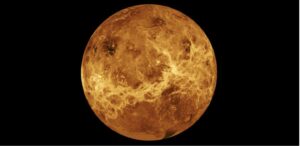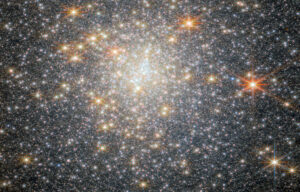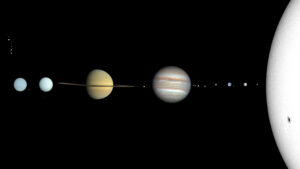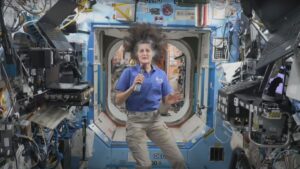A recently launched satellite is shining more brightly than most stars and planets in the night sky. AST Space Mobile launched BlueWalker 3 in 2022. At its brightest, it matches two of the most luminous stars we can see: Procyon and Archernar.
A worrying discovery
Astronomers are both amazed and worried by their discovery.
“The satellite is among the top 10 brightest objects, if you count the stars and the sun. It’s just incredible,” Siegfried Eggl, co-author of the recent study said.
The team of astronomers observed overpasses from Chile, the U.S., Mexico, New Zealand, the Netherlands, and Morocco. Then they ranked the glow of different objects over 130 days. The brighter the object, the lower the number. The BlueWalker satellite came in at 0.4. In comparison, the North Star was 2.0.

The folded BlueWalker 3 satellite before launch. Image: AST Space Mobile
The problem with BlueWalker 3 is its size. When it launched, it was folded. Once in space, however, its 64-square-meter antenna array opened. It is the biggest commercial antenna system in low Earth orbit. The giant antenna ricochets signals around Earth, but it also reflects a huge amount of light.
The satellite became 100 times brighter when its antenna unfolded. “It is unacceptably bright for many sky observers around the world,” said co-author Meredith Rawls.
Obscuring data
When the satellite crosses through the field of view of a telescope, it is so bright that it leaves a streak across its images. In some cases, this is almost impossible to remove and all the data points hidden behind it are useless. This issue mainly affects ground-based telescopes, but even space telescopes like the Hubble are affected.
Another issue is that the satellite uses radio frequencies that are incredibly similar to those in radio astronomy. These cause interference, once again skewing data.

The unfolded satellite. Photo: AST Space Mobile
Larger and brighter satellites are becoming more common, and environmental considerations are ignored. It affects scientific research but also the circadian rhythms and migrations of a number of animals.
BlueWalker 3 is not the only satellite causing such a controversy. SpaceX’s Starlink satellites are 10 times brighter than scientists want them to be, and SpaceX plans to launch 40,000 more!
Even BlueWalker 3, one of the brightest objects in our night sky, is not this particular company’s final goal. It is a prototype, and AST SpaceMobile want to launch larger constellations of satellites.
Following concerns from astronomers, the company says it will add anti-reflective materials to its satellites and will avoid broadcasting within the U.S. National Radio Quiet Zone.
The communications company’s argument is that they are working on behalf of economic development across the globe. “By connecting people, we aim to alleviate poverty, spur economic development, foster a diverse digital society, and save lives,” a spokesperson for AST told Space.com.
Astronomers do not want to halt economic development, but they are pushing for a regulatory body to try and reduce environmental damage.






